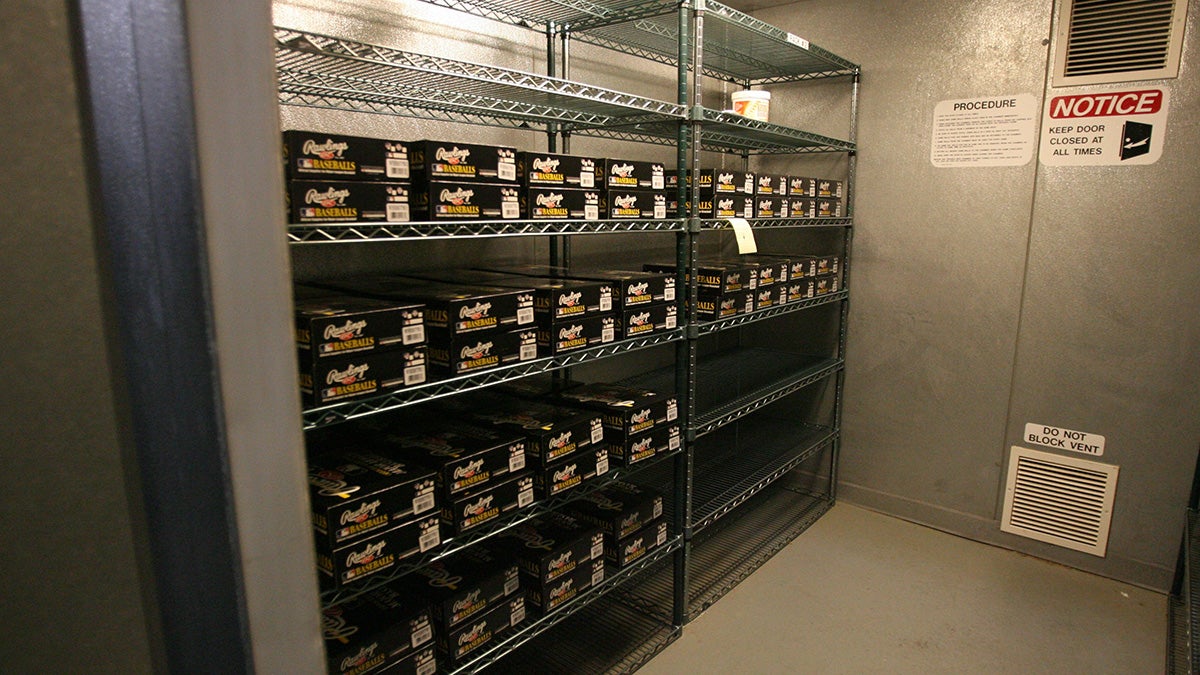Eye on the ball: Humidor added to Arizona Diamondbacks playbook
Cronkite News
When the Arizona Diamondbacks took the field against the Colorado Rockies in their season opener, a new piece of equipment made its debut behind the scenes.
The humidor.
The team is storing baseballs in a climate-controlled chamber, which will alter their weight because of extra humidity, general manager Mike Hazen said. Based on scientific research, the humidor is expected to reduce a significant number of home runs in the hitter-friendly confines of Chase Field.
It is far too early for judgment but In the team’s season opener Thursday night, two home runs were hit, both by the Rockies. In 2017, an average of 1.33 home runs were hit at the ballpark.
In February, the Diamondbacks announced they would incorporate a humidor for the 2018 season to increase weight on the balls and decrease how far they travel.
Arizona is only the second team in Major League Baseball to incorporate a humidor in its ballpark, following its division-rival, the Colorado Rockies. Colorado first implemented the humidor in 2002 due to the high elevation of its stadium, Coors Field, which is the only major league stadium that has a higher elevation than Chase Field. Balls travel farther in thin air and by using a humidor, the Rockies were able to balance the elements of their stadium for a more fair approach.
The Diamondbacks will implement a humidor for the same reason. Major League Baseball states that baseballs should be stored in a 70 degree environment with about 50 percent relative humidity. Phoenix weather makes that impossible without a humidor.
Chase Field has long been referred to as a hitters’ paradise thanks to its short fences in left and left-center field and the exposure to the dry, desert air when the roof is open. Balls tend to travel farther in a dry climate with less humidity to weigh them down.
“If you take a baseball in Phoenix, which is a very dry climate where the relative humidity is very low, and put it in a humidor, the ball will absorb water,” said Alan Nathan, a professor of physics emeritus at University of Illinois.
Nathan emphasized that the humidor has two principles: to make the ball heavier and decrease the “coefficient of restitution” – or the ball’s exit speed off the bat.
“It’s less bouncy (and) means that with all other things being equal, the ball is not going to come off the bat as fast,” Nathan said. “The fact that the ball weighs a little more leads to exactly the same thing. You can hit a lighter ball farther than you can hit a heavier ball. Both of those things lead to reducing the speed of the ball coming off the bat – with all other things being equal.”
It’s no secret the hitter-friendly confines of Chase Field are a dream for offensive teams.
According to Park Factor data collected from ESPN, Chase Field ranked fourth-highest in the MLB with a 1.222 home run rate in 2017. Diamondback hitters knocked 122 home runs at home this season.
It raises the question: Why would the Diamondbacks want to minimize their home runs this year?
“Part of the reason Arizona claimed they wanted to try a humidor was complaints (from) the pitcher,” explained David Kagan, a professor of physics emeritus at California State University, Chico. “The pitchers felt like the surface of the ball was too dry in Arizona.”
The Diamondbacks’ starting rotation boasted the third-best rotation ERA in 2017 at 3.66 even with 81 of their games taking place at their home ballpark, where the dimensions work against them. It makes sense Diamondbacks pitchers would want to incorporate a humidor for many reasons. The moisture of the ball would make it easier to grip, as the desert air can dry out the ball, making it slippery. A better grip can lead to better control, meaning more strikeouts and less walks. Additionally, if the ball is heavier and won’t travel as far, pitchers can cut down on the long fly balls that carry over the fence.
Controversy is minimal regarding the use of a humidor, mainly because it’s too complex to predict. Each baseball stadium has different dimensions, weather and elements, and each team is made up of different kinds of players.
Kagan believes that implementing a humidor actually benefits the fairness of the game, especially when a team whose strength is pitching takes the field.
“It will eliminate the possibility of team’s being able to cheat,” Kagan said. “For example, teams that have really great pitching would want to be sure that the balls have a little more water in them, (because) fly balls to the outfield don’t carry as well and that helps their pitching.”
Diamondbacks All Star first baseman Paul Goldschmidt said he didn’t feel a difference after playing his first game with the humidor implemented. Kagan says that although players may not feel anything specifically, if the predictions are accurate, they’ll notice a change in their numbers.
“If the estimates are correct, if they have 25 percent to 50 percent fewer home runs, they’ll notice that,” Kagan said. “They won’t feel anything different in the ball-bat collision at all.”
Katie Woo is a journalism student at Arizona State University

